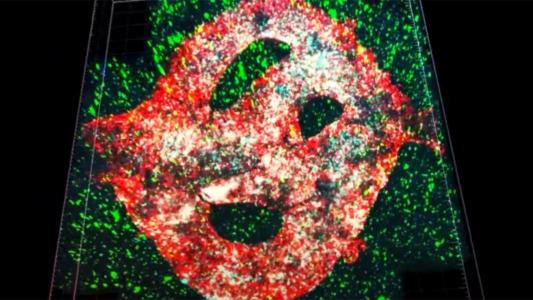A huge challenge of prosthetic limbs is getting them to behave as a natural limb would behave. They’re often heavy and clunky, leaving many amputees frustrated when trying to perform even basic tasks like picking up a ball.
What’s more, prosthetic limbs are more than just practical devices to amputees. There’s a deep, intimate relationship between how well prosthetic limbs work and how people feel about them, Hugh Herr, head of the Biomechatronics group at MIT’s Media Lab, previously told me.
“That level of ownership and identity over the device completely changes the perception of how the person views the device, and whether they believe it is beautiful or not.”
Prosthetic science has been steadily pushing towards more life-like limbs.
Prosthetic science has been steadily pushing towards this goal of creating more life-like limbs by improving the efficacy of electrical signals, using AI to enhance a prosthetic limb’s performance, and developing new amputation surgery procedures that provide better control and less pain.
Now, MIT and Brown researchers say magnets may prove to be a crucial ingredient to providing better control of prosthetic limbs.
How neuroprosthetics are made: Most prosthetic limbs now are controlled via electrical sensors that read the electrical activity of your amputated muscles, which then trigger the prostheses, a technique called electromyography (EMG).
These sensors are placed on the surface of the skin, which is great because it’s non-invasive. However, that also means that these sensors don’t provide a wealth of data. EMG only allows the device to read what the brain is telling the muscle to do, but not what the muscle is doing, said MIT postdoc and study lead author Cameron Taylor.
Implanting the electrical sensors can provide better signals, but the process is “highly invasive” and costly.
Enter the magnets: To help push towards better performing devices, the MIT and Brown researchers looked to develop a better system to control them. They believe that magnetic beads embedded within the amputated limb can provide better, more detailed information about what the limb’s muscles are doing, which in turn could allow a prosthetic limb to perform ever-closer to a natural limb. They call the technique, published in Science Robotics, “magnetomicrometry,” or MM.
“Our hope is that MM will replace [electrical sensors] as the dominant way to link the peripheral nervous system to bionic limbs,” Herr said.
Most prosthetic limbs now are controlled via electrical sensors that read the electrical activity of your amputated muscles, which then trigger the prostheses. But they only provided limited data.
“ And we have that hope because of the high signal quality that we get from MM, and the fact that it’s minimally invasive and has a low regulatory hurdle and cost.”
How it works: The goal of the surgically implanted, tiny magnetic beads is to measure the length and speed of the muscles as they are contracting.
By measuring how pairs of magnetic beads inside the muscles move in relation to each other, the team can figure out the length and speed of the muscle’s movements. That information is then fed into a computer algorithm, which would direct the device to move in a way closer to what the patient is picturing thanks to the extra detail. This all happens within milliseconds.
By measuring how pairs of magnetic beads in the muscles move, the prosthetic’s operating algorithm can gather data which could allow the limb to move more how the patient wants.
To test their technique, the researchers implanted the magnetic beads into the calves of turkeys. When the turkeys’ ankle joints were manipulated, the team could measure the precise location of the beards within the width of a human hair using magnetic sensors on the outside of the leg.
Beyond turkeys: In addition to controlling prosthetic limbs, the technique may also help better guide robotic exoskeletons, which Herr compares to the power steering in cars.
The researcher’s next step is to begin human trials in patients with below the knee amputation, which they hope to begin within the next few years.
We’d love to hear from you! If you have a comment about this article or if you have a tip for a future Freethink story, please email us at [email protected].






